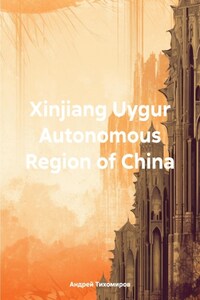Creation of the Xinjiang Uyghur Autonomous Region
Recorded history goes back at least 2,500 years, with generations of nations and empires vying for control of all or parts of this territory. The area came under the rule of the Qing Dynasty in the 18th century and was later replaced by the Republic of China. It has been part of the People's Republic of China since 1949 and after the civil war between the Kuomintang and the Communist Party. In 1954, the Chinese Communist Party created the Xinjiang Production and Construction Corps to strengthen border defense against the Soviet Union and develop the local economy by garrisoning troops. In 1955, Xinjiang was transformed from an administrative province into an autonomous region. Xinjiang has discovered rich oil and mineral reserves in recent decades and is now China's largest natural gas production area.
Xinjiang consists of two main geographically, historically and ethnically distinct regions that had different historical names: the Dzungar Basin north of the Tianshan Mountains and the Tarim Basin south of the Tianshan Mountains until the Qing Dynasty in China unified them into a single political entity in China. 1884, known as Xinjiang Province. At the time of the Qing conquest in 1759, Dzungar was inhabited by nomadic Dzungar people who practiced Tibetan Buddhism in the grasslands, and the Tarim Basin was inhabited by Turkic-speaking Muslim farmers living in oases, now known as the Uyghurs. Until 1884 they were managed separately. The original Uyghur name for the Tarim Basin is Atishar.
The Qing Dynasty was well aware of the differences between the Buddhist Mongol territories north of the Tianshan Mountains and the Turkic Muslim territories south of the Tianshan Mountains and initially administered them as separate administrative units. However, the people of the Qing Dynasty began to view these two regions as part of one region – Xinjiang. The concept of Xinjiang as a single geographical identity was created by the Qing Dynasty. During the Qing Dynasty, the general public in Xinjiang had no "regional identity"; on the contrary, the unique identity of Xinjiang was given to the region by the Qing Dynasty as it had a unique geography, history and culture and was created as a Chinese, multicultural and separate region from the central government where the Han and Hui people live. Asia for more than a century and a half. At the end of the 19th century, some people still proposed dividing Xinjiang into two independent regions, north of the Tianshan Mountains and south of the Tianshan Mountains, and endlessly debated whether Xinjiang should be created as a province. Xinjiang is a vast and sparsely populated region, covering an area of more than 1.6 million square kilometers (the size of Iran) and covering about one-sixth of the country's territory. Xinjiang borders the Tibet Autonomous Region and Leh region of Ladakh in India to the south, Qinghai and Gansu provinces to the east, Mongolia (Bayan-Ulgoi Province, Gobi-Altai Province and Khovd Province) to the east, and Russia to the north. The Altai Republic borders on Kazakhstan (Almaty and Eastern regions), Kyrgyzstan (Issyk-Kul, Naryn and Osh regions), Gorno-Badakhshan Autonomous Region of Tajikistan, Badakhshan Province of Afghanistan and Western Gilgit-Baltistan of Pakistan.










